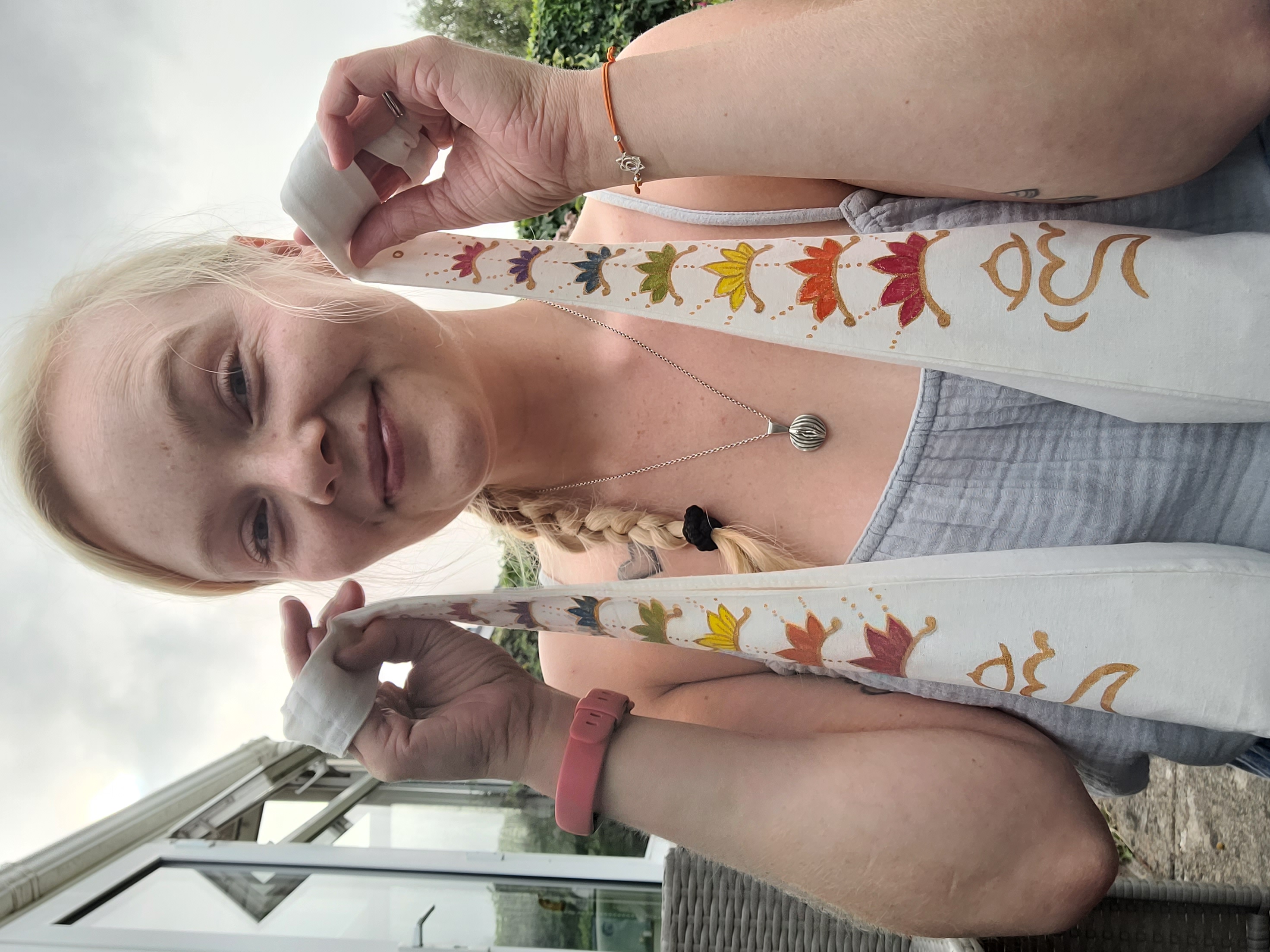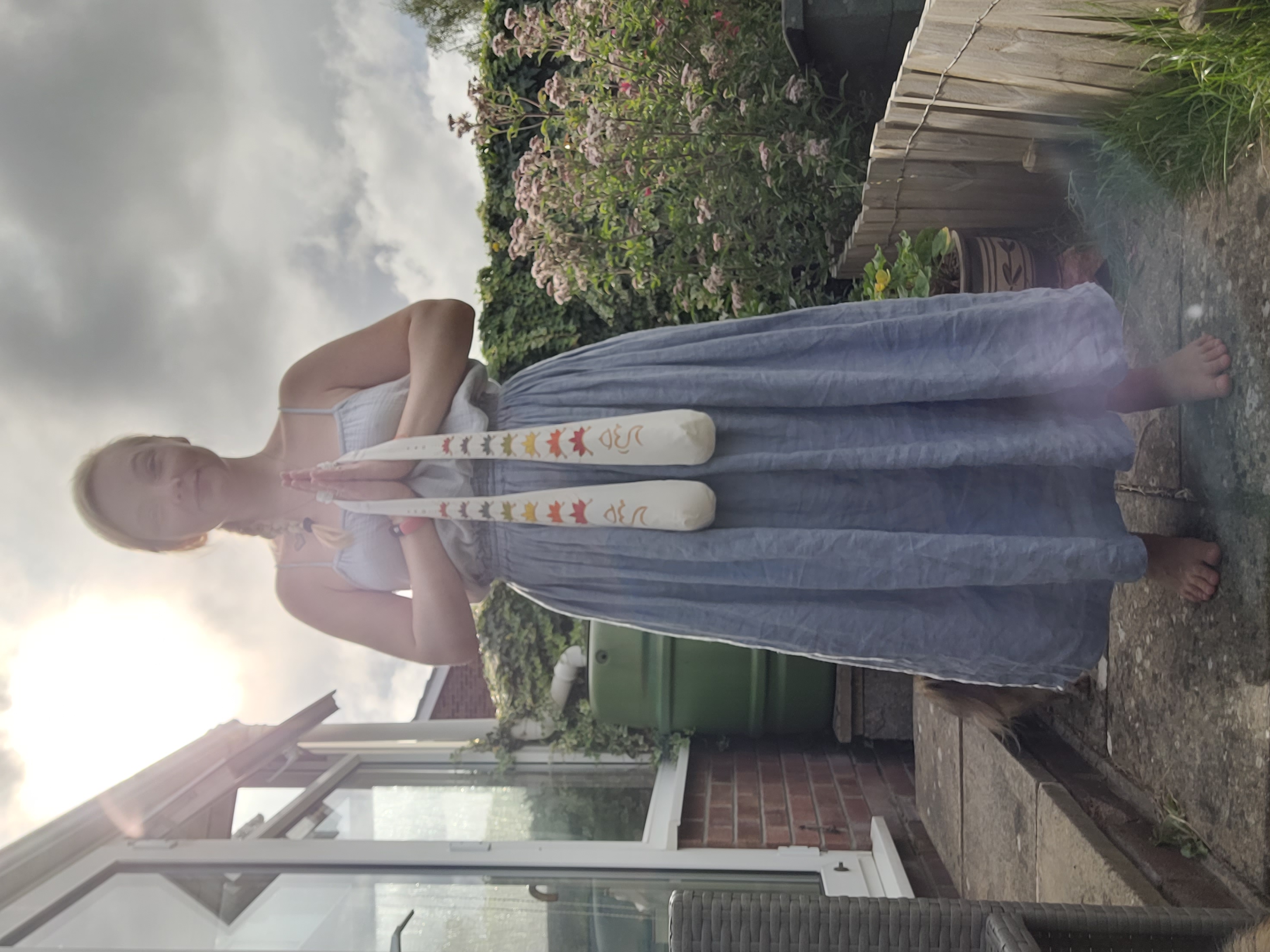How Flow Arts and Intuitive Movement help my axial SpA
Ruth joined one of our recent Your SpAce meetups and shared how she’d found exercise difficult for her axial SpA, until she discovered Flow Arts and Intuitive Movement. Ruth shares her experiences in this month’s blog.

I’ve often found exercises for my axial SpA difficult. I’ve recently been diagnosed as autistic, and I think my aversion to exercise sometimes has sensory reasons, especially when certain physio exercises feel rigid and structured, and don’t seem to fit with my body and what it really needs. Discovering Flow Arts and Intuitive Movement has had a really positive impact on me, so I wanted to share with other people with axial SpA.
Intuitive Movement, for me, is about really focusing in on myself and my body and letting my body decide the movement that it needs most. Flow Arts outside of the circus circle is relatively new, so there’s not a whole lot of information out there.
Flow Arts is a term to describe movement-based art forms, including juggling, object-spinning, and dance. The broad category of Flow Arts includes a variety of pursuits that harmonise skill-based techniques with creative expression to achieve a state of present-moment awareness known as Flow (you might be aware of getting into a state of Flow, when you’re immersed in writing, or another hobby that makes you lose track of time and you get super focused on.)
Getting started with Intuitive Movement
The easiest way to start off is to stick on some ambient, calming music. I love that it feels just as good seated, as it does standing and moving about on your feet. If I’m seated, I tend to close my eyes, as there’s less likelihood of falling over and hurting myself, but sometimes it’s good to keep your eyes open if you’re standing and moving really slowly.
I take a few deep breaths and notice the areas of my body that are painful, aching, tight. Maybe I can feel the weight of my fatigue sitting inside my head, and how heavy my limbs are. Then I start to take very small movements. It might just be slowly wiggling each finger, as if I’m playing an invisible keyboard. Then I might see where else my body feels like moving. Maybe my arms stretching up above my head, while I sway to the music.
If I’m standing I might want to explore how much space my body can take up, and how far I can stretch each limb. I always notice the sensations that are being brought up, and if things are becoming too painful then I slow down again, or scale back the movements. This isn’t about how much you can do, or how far you can stretch. It’s about really tapping into what your body is needing.
It’s good to move to music that makes you feel calm and happy. You can test with different genres, though I’d be mindful to avoid anything too energetic, as the key here is really focusing in on your body and the sensations, and not just moving as much as you can, or as quickly as you can.
In some ways it is a kind of meditation, and being present in the moment. It has developed into something I am now able to do every single day in some form or another, as it moves with my own energy levels, without feeling like I’m failing at it. I’ve also found it useful in helping me to process and cope with emotions, especially when my pain and fatigue levels are higher. This really links into mindfulness, but also somatics, which is something I’m exploring alongside the intuitive movement.

Playing with movement
I recently discovered poi, where you swing tethered weights in rhythmical patterns. It’s helped a lot with my coordination and I’m really starting to build up better strength and mobility in my arms and shoulders, which is something that’s caused me a lot of issues over the last years. I enjoy learning new skills, but also just flowing and playing with it.
The benefits
The benefits of this type of movement are that it’s very holistic, and bridges the gap between exercise and the spiritual/meditation aspects of movement and connecting to ourselves. It’s definitely not about quick fixes, and maybe my improvement has been small compared to a physio programme, but I feel like this is the type of improvement that’s really going to last.
As a result of this, I’m also feeling much more connected to myself and the body I find myself in. It’s been a real struggle to be kind to myself when things don’t work properly, or my life doesn’t look like how it ‘should’. I’ve hated my body for the pain it puts me through, but this Intuitive Movement and Flow has helped me to be gentler with myself. I have been more caring about what my body needs, and more aware of it too!
I still very much deal with pain on a daily basis, and it still effects all aspects of my life, but I feel like I’m finally working with my body, as opposed to fighting against it, and that acceptance has been really empowering. I’m really excited to see where this might take me physically and mentally, and I hope my sharing helps others discover something new, or at the very least, encourages them to tap into their own bodies and ask them what they need!